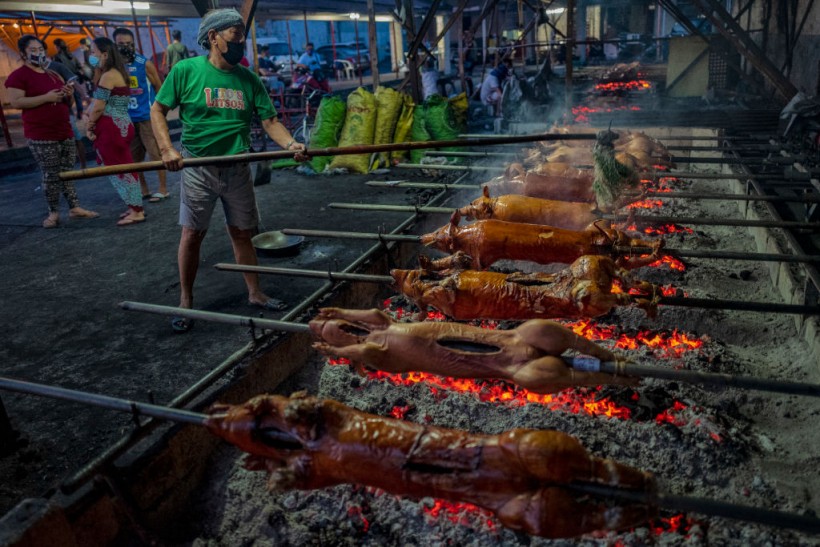Lechon: The Iconic Roasted Pork From Puerto Rico, Cuba, and Spain

When it comes to roasting an entire pig, one dish often stands out, and that is lechon. The dish is basically slow-roasted pork, often a whole pig, famous for its crispy skin and succulent and juicy meat.
Lechon is a popular food in Puerto Rico, Cuba, Spain, and even in the Philippines. It is enjoyed across the world, especially in Latin America. The dish traces its roots back to Spain, which took the art form to the New World and its farthest colonies.
It has since spread to Colombia, Honduras, Argentina, Uruguay, Bolivia, Ecuador, Peru, Costa Rica, the Dominican Republic, and other Spanish-speaking nations.
READ NEXT: Mexican Food: Top 5 Taco Varieties You Have to Try in Mexico
The Original Suckling Pig of Spain
The original Lechon is known to be a whole piglet, still suckling from its mother, being roasted inside an oven until it becomes tender, juicy inside, and crispy on the outside.
In Spain, only a suckling pig can be called lechon and must be slaughtered between two and six weeks. It is often served with a side of potatoes and, of course, wine.
Puerto Rico and Cuba Add a Caribbean Flair
The Puerto Rican style of Lechon stays true to its Spanish roots, as it often uses a suckling pig. However, unlike the Spanish style, this one is placed in a metal rod and skewered, rotating over an open charcoal pit. It results in extra crispy skin, according to Amigo Foods.
However, not all lechon in Puerto Rico is suckling pigs, as slightly older juveniles and adults are also used. The dish is so popular and revered in the U.S. territory that Highway 184 is also known as the La Ruta del Lechon, better known to English speakers as the "Pork Highway."
In Cuba, the dish is slightly different. While other countries like Spain, the Philippines, and Puerto Rico tend to use whole pigs, Cuba does things differently, as they often use parts of the pig instead of the entire animal. However, they also usually roast whole pigs.
Cuban Lechon, or Lechon Asado, whether the entire pig or part of it, is usually marinated in a citrusy concoction known as a mojo sauce. It is placed inside a Caja China, an outdoor roasting box that uses coals to cook, according to Cook2eatwell.
The Philippines: Where Lechon is an Art Form
Spain's most faraway colony is over in the Philippines, and the Southeast Asian country has treated lechon as a national obsession. The dish is officially the country's national food, often enjoyed during special occasions like birthdays, weddings, Christmas, or fiestas. In one province, they even have a fiesta dedicated to lechon.
There are plenty of styles in the Philippines, like the "Manila Lechon" or "Luzon Lechon," which is not usually stuffed with herbs but served with "lechon sauce." Meanwhile, the "Cebu Lechon" or "Visayas Lechon" is stuffed to the brim with herbs like bay leaves, lemongrass, green onions, black peppercorns, and scallions.
While the debate on which style is the best is ongoing, Filipinos are also seeking ways to innovate the dish, from new variants like the lechon belly to off-shoots like lechon manok, which is basically Philippine-style rotisserie chicken.
READ MORE: Mexico: 5 Underrated Mexican Food That Are Not Tacos
This article is owned by Latin Post.
Written by: Rick Martin
WATCH: Inside Puerto Rico's Pork Highway, The Ruta Del Lechón - Food insider
Subscribe to Latin Post!
Sign up for our free newsletter for the Latest coverage!














